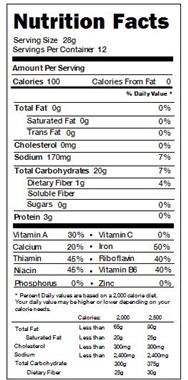

The normal range of ionized calcium in healthy people is 4.6 to 5.3 mg/dL (1.15 to 1.33 mmol/L). Levels of ionized (or free) calcium, the biologically active form, in serum are also used to measure calcium status. However, serum levels do not reflect nutritional status because of their tight homeostatic control. Total calcium levels can be measured in serum or plasma serum levels are typically 8.8 to 10.4 mg/dL (2. Net absorption of dietary calcium is as high as 60% in infants and young children, who need substantial amounts to build bone, but it decreases to about 25% in adulthood and continues to decline with age. Age can also affect absorption of dietary calcium. Absorption of calcium from food is about 45% at intakes of 200 mg/day but only 15% when intakes are higher than 2,000 mg/day. Īn inverse relationship exists between calcium intake and absorption. These levels remain constant in men, but they start to drop in women as a result of increases in bone remodeling due to decreased estrogen production at the start of menopause. This amount rises quickly after birth, reaching about 1,200 g in women and 1,400 g in men by adulthood. Īt birth, the body contains about 26 to 30 g calcium.

Bone remodeling is required to change bone size during growth, repair damage, maintain serum calcium levels, and provide a source of other minerals. Unlike teeth, bone undergoes continuous remodeling, with constant resorption and deposition of calcium into new bone. More than 99% of calcium in the body is in the form of calcium hydroxyapatite, an inorganic matrix of calcium and phosphate that is stored in the bones and teeth. Īlmost all (98%) calcium in the body is stored in the bones, and the body uses the bones as a reservoir for, and source of, calcium to maintain calcium homeostasis. Vitamin D is required for calcium to be absorbed in the gut by active transport and to maintain adequate calcium levels in blood. Active transport is responsible for most absorption when calcium intakes are lower, and passive diffusion accounts for an increasing proportion of calcium absorption as intakes rise. Ĭalcium from foods and dietary supplements is absorbed by both active transport and by passive diffusion across the intestinal mucosa. The small ionized pool of calcium in the circulatory system, extracellular fluid, and various tissues mediates blood vessel contraction and dilation, muscle function, blood clotting, nerve transmission, and hormonal secretion. IntroductionĬalcium, the most abundant mineral in the body, is found in some foods, added to others, present in some medicines (such as antacids), and available as a dietary supplement.Ĭalcium makes up much of the structure of bones and teeth and allows normal bodily movement by keeping tissue rigid, strong, and flexible. For a general overview of Calcium, see our consumer fact sheet on Calcium. Mayo Clinic 2023.This is a fact sheet intended for health professionals. White whole-wheat flour is tasty and nutritious.Department of Agriculture, Agricultural Research Service.

Department of Health and Human Services and U.S. 2020-2025 Dietary Guidelines for Americans.The impact of cereal grain composition on the health and disease outcomes. Whole grains, refined grains, and dietary fiber.For example, many breads and breakfast cereals are fortified with folic acid and iron. Foods with these extra nutrients are called fortified foods. Or food may get a boost in the nutrients that are naturally there. Foods also may have nutrients added that aren't naturally there. Fiber usually isn't replaced in enriched grains. Enriched white rice has these vitamins and minerals added back. For example, when rice is refined, it loses vitamins, minerals and fiber. These refined grains are called enriched grains. The nutrients removed from refined grains may be added back. Food with refined grains include white rice and most white breads, pastries, cakes, and crackers. This process takes out nearly all of the fiber and many other nutrients. These grains have a finer texture and a longer food storage life. Refined grains have the germ and bran removed. Examples of whole-grain food include brown rice, oatmeal and whole-grain breads. Whole-grain flour is ground from whole grains. Whole grains have all parts of the grain. It contains mostly starches.įoods made from grains fall into these categories: The endosperm is the energy source for a seed. The germ is the part of the seed that grows into a new plant. The bran is the outer layer of the seed and contains most of the seed's fiber. Whole grains include the bran, germ and endosperm.


 0 kommentar(er)
0 kommentar(er)
